This, is a bucket-list item. I just ticked it off last week.
The remote Zanskar valley in Jammu & Kashmir (India) is connected to the rest of the world through the town of Kargil. In winters, when the high passes towards Kargil are unmanageable, the inhabitants of this region walk upon the frozen Zanskar River and connect with Leh (the capital of Ladakh) and the rest of the world. Over time, Indians and adventure tourists caught fancy of this trail and BBC stamped it with “one of the 5 most dangerous treks in the world”. Thus, was born the “Chadar Trek” – literally meaning walking on the sheet of ice over the Zanskar river. Now perhaps every year 800 – 1000 tourists try and claim their dates with destiny here.
At ~ 10,500 feet and with temperatures ranging between -21C to -34C, this 100 odd km walk on the river is a test of endurance, mental steel and fitness. With daily changing surface patterns of the ice forming on the river, this trek is fascinating to experience and introspect. For companions, you have howling wind (because you have vertical cliffs as high as 600m for valley, and at places the valley is no more than 8m wide) and gurgling water. Each day is a treacherous walk where a moment of lapse can make you fall and skid for a couple of meters, which is uncomfortable mostly. Most nights, you camp on patchy sides of the river, with temperatures dropping rapidly every hour. Sometimes, when the ice is not securely formed over the river, you need to climb uncomfortable cliffs or wade thru knee deep water praying that the soft ice holds firm. There is no electricity / internet / phone / evacuation available for the whole duration of the trek (there is a satellite phone at the extreme most point of the trail, but that’s another story).
The trail starts from Leh which also is the nearest airport. At 11,500 feet it is absolutely essential for trekkers to rest for 1 full day at Leh and acclimatize themselves. Most flights to Leh arrive in the mornings giving trekkers a full day to rest and recuperate. By evenings, when one feels better, trekkers do shop for last minute gaps in their armory – gum boots, woolen socks, dry fruits, energy bars, batteries and thermal wear. The religious, offer a prayer at the Shanti Stupa, next to Leh Palace.

Most tourists stand and click pictures at the confluence of turbid Indus and azure Zanskar before embarking on the start of the Trek. It all looks serene and peaceful at this stage. The Zanskar looks even welcoming at this point. Thereafter, as the road worsens and you get into the barrenness of “Hemis High Altitude National Park”, the river starts to freeze and the bus slowly gets lower and lower into the gorge that is to be our home for the next 7 nights.
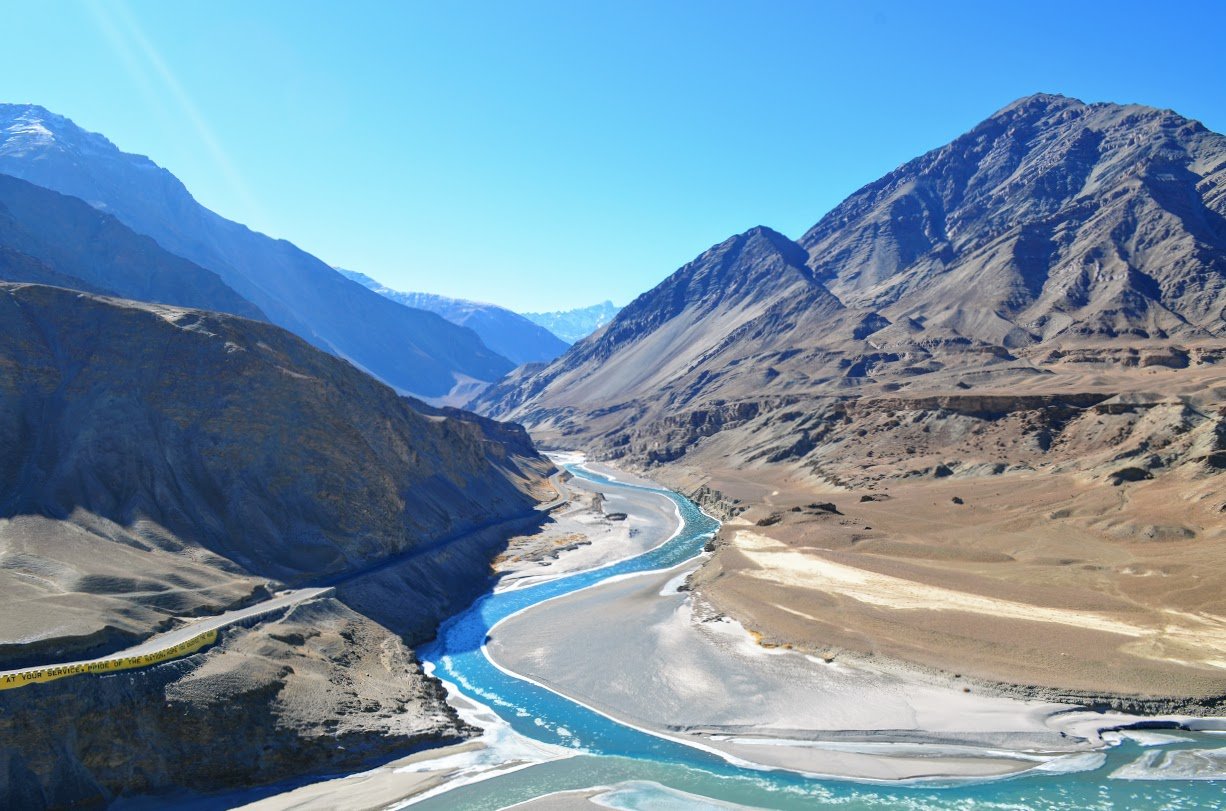
The actual trail over ice starts a little beyond a place called Chilling (I wanted to update my FB status with the message: chilling @ Chilling, but damn internetJ). When we reached there around 3pm in the afternoon, the temperature recorded -21C. It indeed was chilling. We camped for the night on the other bank of the river, on a bed of pebbles and tried out our gum boots over the ice. Crunchy sounds of crushed ice under our boots felt very good. Despite the cold, we tried for a bonfire, failed miserably, ate an insipid dinner and retired to bed by 8pm India time.
When we got up at 6am, fed up for sleeping so long and with a back that hurt because of the cold floor (despite 2 sleeping bags), we realized that everything had a thick layer of ice – our sleeping bags, tent walls, boots, rucksacks. A quick check with our local porter told me that nights freeze upto -32C and may have been so. We were being gradually introduced to “cold”. I put in 4 layers of prevention and still shivered till we started to walk upon the ice.

First day, everyone falls. Very frequently. You gradually realize that even a little bit of slope on the ice is dangerous to walk upon. You realize that you shouldn’t lift your foot entirely off the ice and you realize that walking like penguins make good progress. You also realize that you skid when you fall and that it hurts a lot. You also fear that when the Chadar is just about half a meter wide and you slip, you may just drop into the crazy streams of Zanskar. The first day, I had fallen 3 times. I was okay cause everyone around was falling, but when after the 3rd fall I saw fresh blood stains on the ice floor as we neared our camp site, I realized that falling can be risky and can be fatal. The fall count of our batch that day was averaging 3 per head. I decided that I will do better.

Then, it becomes a ritual. You get to camp and look for the best possible tent you can lay your hands upon in the group. With as many as 150 people trekking alongwith you, the camping sites literally turn into tented towns and things get as congested as Bangalore’s road traffic. You choose your tent, lay down your gear, wash down a cup of tea, and try to keep your fingers and toes warm till dinner is served, then zip up inside your tent, close your eyes and look for sleep. You get up in the morning, sum up the courage to brush your teeth and wash your face. I had seen gutsy fellows going to answer nature’s call. They had the look of lost Samurais when they came back (though in hindsight, I have never read of posterior frost bites in humans). The best moment of the day is when your guide gives you the go ahead to start trekking.

The views every day, every moment are marvelous. Cobalt blue skies, dusty brown vertical walls of Karakoram, glittering white ice and azure blue waters in varying patterns at every corner. No matter if you look out front, or turn around and look back for miles, the pattern doesn’t change. Sunlight places additional filters on these colors and creates additional layers of magic. Ice provides you with an encyclopedia of textures so that you can learn on the job, which ice is good to walk, and which is best left untouched.


And then comes the day when you are on the last day of the trek before you start your return. This is the day when one camps at Nerak (pronounced similar to Narak, which means Hell in Hindi). This is the most arduous day of toil when the ice is slippery, the river jagged and hostile, the Chadar deceptive at places making you crawl on the cliffs and people are getting jittery. More so, as we reach the traditional campsite, we find it too full to occupy and hence have to look for another campsite. The problem is that the river is broken at the bend, so we have to climb up an extremely high mountain on just gum boots and then skid down a mountain full of pebbles. Choicest abuses in many languages are often heard on this day on the mountain. The saving grace is the amazing frozen waterfall that greets you when you exit the mountain and once again are on the river. This, is the trek’s best sight.

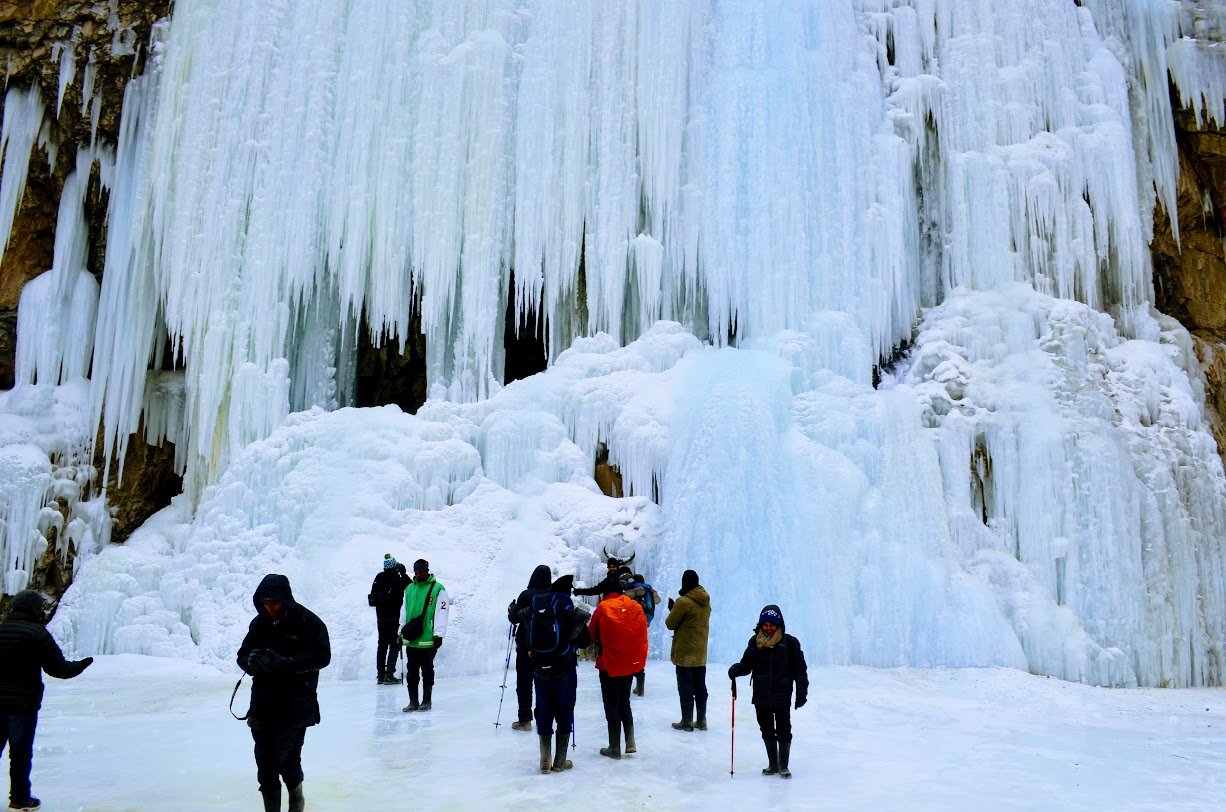
Now is the time to turn back and a countdown clock starts in everybody’s mind. Never mind that Nerak is the only point where there is a satellite phone available if one needs to make a call (one needs to steep climb up an hour to get to the phone though); never mind that Nerak had the only permanent dry toilets where one can do the do without bothering about frostbite; never mind that Nerak had the flattest campsites and trees and yaks and even a shop to buy provisions. Suddenly, the race to get back home is on!
And so we start, steps quicker, pace confident, singing songs, encouraging passersby who will experience Nerak today. We are confident of walking over the broken Chadar; we are confident that our gum boots are the best to climb pebbles and rocks; we are confident that we will not fall and it’s the others; we are confident that we have done and endured; we believe we are the best. And then, we fall again, harder! We slip, we need passing porters to help us get down the cliff and help us tell us where the trail is. And this way, falling, slipping, getting up, we get back to Chilling where our buses are waiting for us to ferry back to Leh where hot water, good food and soft beds await us. But there is more…

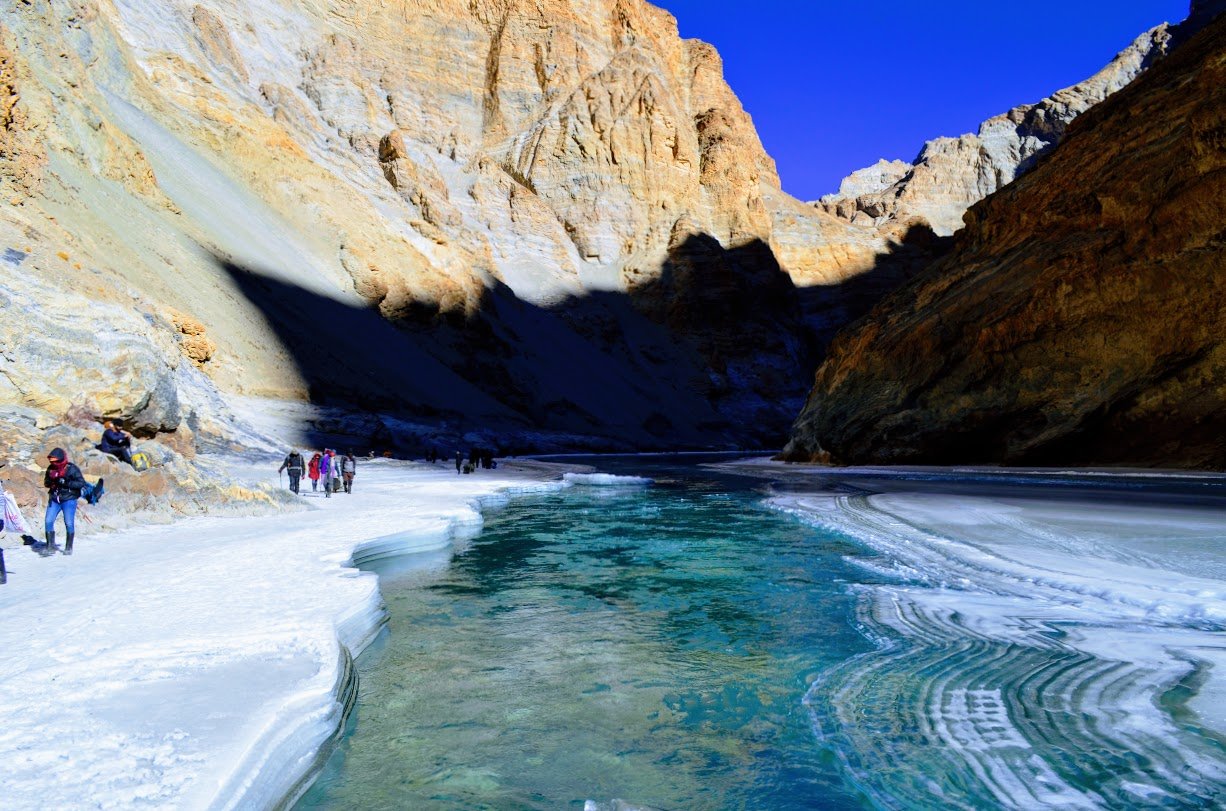

I didn’t fall after the first day. I didn’t change my clothes for the whole duration of the trek (nothing). I went to answer nature’s call on the 3rd day and I for the first time in my life used toilet paper (as wet tissues had frozen). I lost ~ 2.4kg on this trek and had a chill-burn on my face that an IAF surgeon said was a grade 1 frost bite, but he said there was nothing to worry. With my experience, here are a few things I will recommend to trekkers for making the trek more enjoyable for you –
- Seriously consider if you need a large backpack to carry as you actually may not dip into it for the whole trek. You can save your back a lot of weight, or money if you are handing it over to porters. Backpacks get thrown around by porters and can get wet too.
- Most of us did the treks with 400 Rs Gum Boots bought locally at Leh though everyone was carrying expensive trekking shoes. You can knock of this expense altogether.
- What you must carry: sunglasses, cold cream, sunscreen, lip balm, flask, trekking pole, power banks, yoga bars or trail mix, extra camera batteries, phone (on flight mode).
- What you must wear: Body (sweat proof T shirt, thermals, fleece shirt, fleece jacket, down jacket), neck warmer and warm cap, gloves with inners, and poly-amide socks under your woolen socks.
- Keep your mind calm. There are no luxuries available in this trek. Even open dry toilets are a privilege. Get used to looking like Brad Pitt in “seven years in Tibet”.
- Tip the porters generously. They do a lot of hard work and are always so charming, but are paid a pittance. Leave your gum boots with them as you return. Consider gifting them if you are not going to use the trek clothing you were wearing.
- Be in a group, even if you are solo by mind. Improves your safety and security as well as your social skills.
- Drink water!
The trek will be available for next 4-5 years after which the roads will connect Zanskar better with Leh and with Manali. We will discover something else then, but for now, Zanskar remains very special. Go for it.

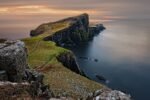



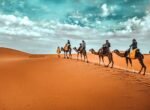
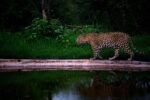



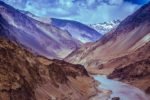


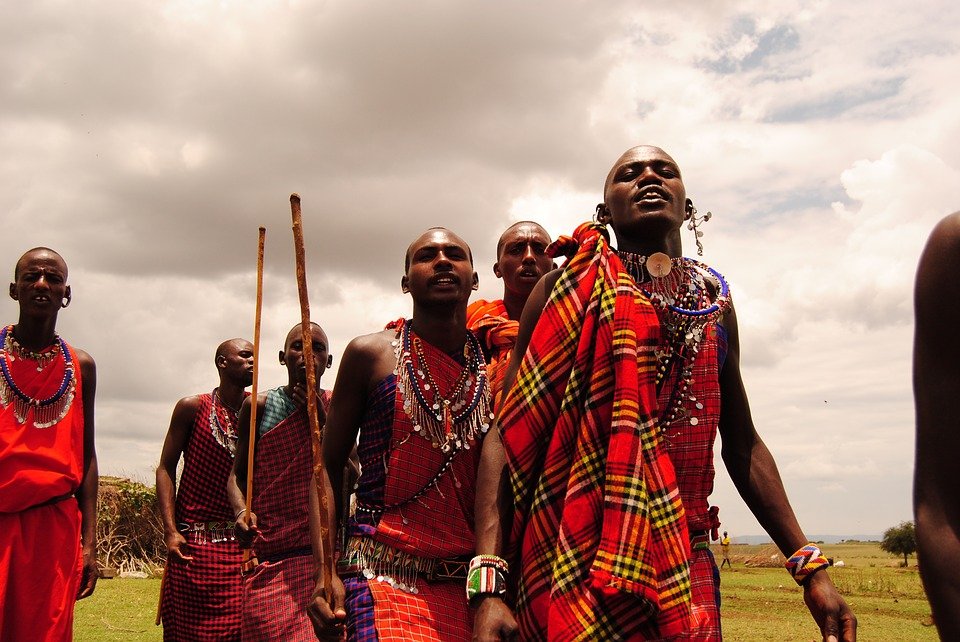


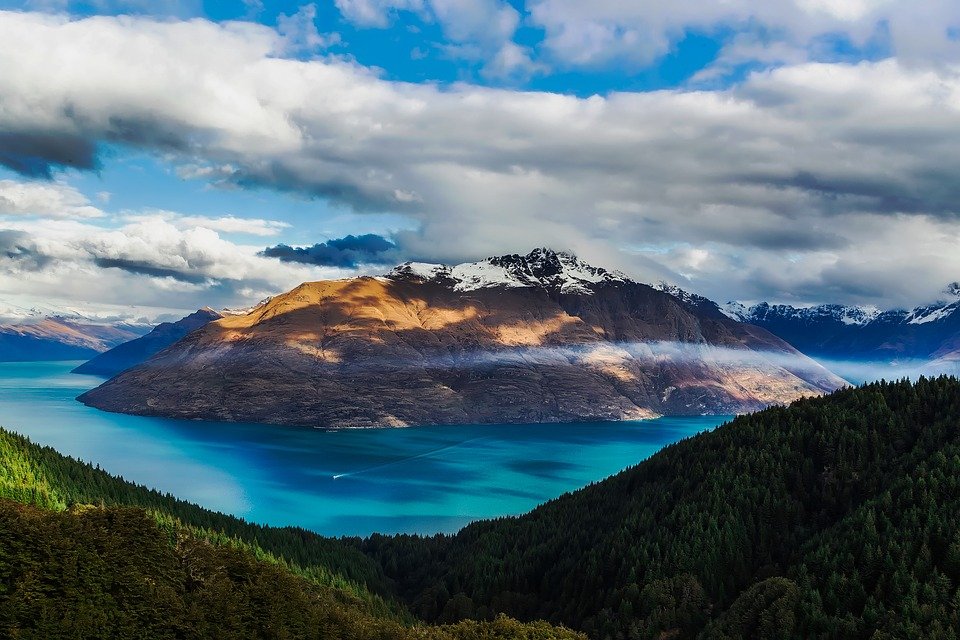


Wow.. Absolutely amazing post. Thanks for giving us the virtual tour of Chadar trek. Loved reading your experiences.
That is a spectacular view. Awesome landscapes. Must have been an awesome experience.